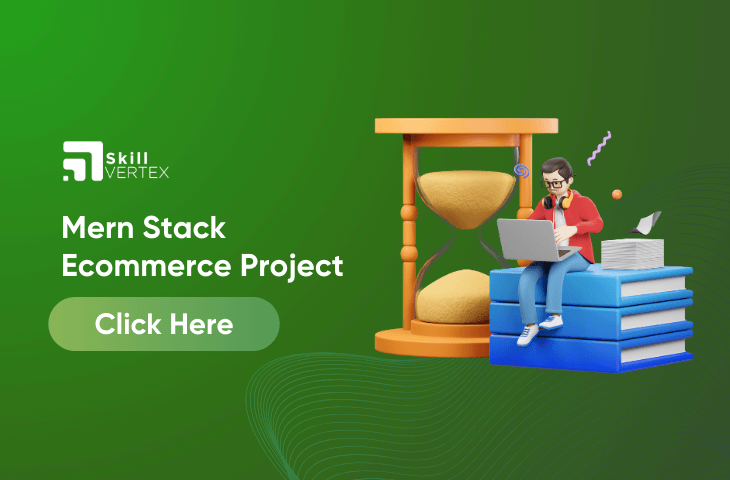Table of Contents
Mern Stack Ecommerce Project
Welcome to our MERN Stack E-commerce Project, where cutting-edge technology meets seamless online shopping. Powered by the dynamic combination of MongoDB, Express.js, React, and Node.js, our e-commerce platform is designed to deliver a modern and efficient shopping experience. Harnessing the power of JavaScript throughout, from the server to the client, we bring you a feature-rich solution that encompasses user authentication, robust product management, and secure checkout processes. Join us on this journey as we explore the convergence of technology and commerce, creating a user-friendly and scalable platform for your online shopping needs. Welcome to the future of e-commerce development with the MERN stack!
How to Create Mern Stack Ecommerce Project
Creating a MERN (MongoDB, Express.js, React, Node.js) stack e-commerce project involves several steps. Below is a general guide to help you get started:
1. Project Setup:
Backend (Node.js and Express.js):
- Set up a new Node.js project using npm.
- Install Express.js to handle server-side logic.
- Connect to MongoDB using Mongoose for data storage.
Frontend (React):
- Create a new React app using Create React App or another boilerplate.
- Set up the project structure for components, styles, and assets.
2. Design Database Schema:
- Define the structure of your MongoDB database, including collections for products, users, orders, etc.
- Establish relationships between different entities (e.g., a user can have multiple orders).
3. Backend Development:
User Authentication:
- Implement user authentication using libraries like Passport.js or JWT (JSON Web Tokens).
- Create routes for user registration, login, and logout.
Product Management:
- Develop routes and controllers to manage products (create, read, update, delete).
- Implement product categories and tags.
Cart and Checkout:
- Create functionality to add products to a shopping cart.
- Implement a checkout process, including order creation and payment integration (e.g., Stripe or PayPal).
4. Frontend Development:
UI Components:
- Design and create React components for different sections of the e-commerce site (product list, product details, cart, checkout, etc.).
State Management:
- Use state management libraries like Redux to manage the global state, especially for the shopping cart and user authentication.
User Interface:
- Style the application using CSS or a styling library/framework (e.g., Bootstrap or Material-UI).
- Ensure a responsive design for a seamless user experience on different devices.
5. Connect Frontend and Backend:
- Set up API calls from the React frontend to interact with the Express.js backend.
- Handle data fetching and updating through API endpoints.
6. Testing:
- Implement unit tests and integration tests to ensure the reliability of your application.
7. Deployment:
- Deploy the backend (Node.js/Express) to a platform like Heroku or AWS.
- Deploy the frontend (React) to a static hosting service like Netlify or Vercel.
8. Security:
- Implement security measures, such as input validation, secure authentication practices, and protecting against common web vulnerabilities.
9. Optimization:
- Optimize your application for performance, including image optimization, code splitting, and caching.
10. Launch:
- Test the entire application thoroughly before launching it to the public.
Remember, this is a broad overview, and the specific requirements for your e-commerce project may vary. Additionally, as technology evolves, it’s essential to stay updated on best practices and incorporate any relevant changes into your project.
FAQ- Mern Stack Ecommerce Project
Q1. Is MERN stack good for ecommerce?
Ans. Using the MERN stack for your e-commerce platform brings significant benefits. MongoDB’s NoSQL nature ensures flexibility and scalability, especially with cloud storage. Node.js, as the backend runtime, enhances processing capabilities, handling concurrent connections efficiently. The MERN stack’s cloud compatibility enables seamless deployment, ensuring the platform’s accessibility and efficient data management from any location. This flexibility is particularly advantageous for remote access, allowing for the easy administration and monitoring of your e-commerce data from anywhere. In summary, MERN provides a powerful foundation for building scalable, cloud-ready, and geographically accessible e-commerce solutions.
Q2. Which stack is best for eCommerce website?
Ans. Time-to-Market is a crucial consideration in selecting eCommerce technologies. For swift development, LAMP (Linux, Apache, MySQL, and PHP) stacks are often recommended, especially if your web development team is proficient in PHP. Opting for LAMP can expedite the development process, making it a favorable choice when time-to-market is a critical factor for your eCommerce project.
Q3. What is the best programming language for eCommerce site?
Ans. Different programming languages and technology stacks offer unique advantages in e-commerce development. Java is chosen for its robustness and scalability, JavaScript for dynamic user interfaces, PHP for simplicity and cost-effectiveness, Python for readability and rapid development, CSS for styling, and MEAN Stack for full-stack JavaScript efficiency. Ruby on Rails and Django are preferred for quick and feature-rich development. The choice depends on project specifics like scale, complexity, and team expertise, with each language offering distinct strengths for building successful e-commerce applications.
Hello, I’m Hridhya Manoj. I’m passionate about technology and its ever-evolving landscape. With a deep love for writing and a curious mind, I enjoy translating complex concepts into understandable, engaging content. Let’s explore the world of tech together

